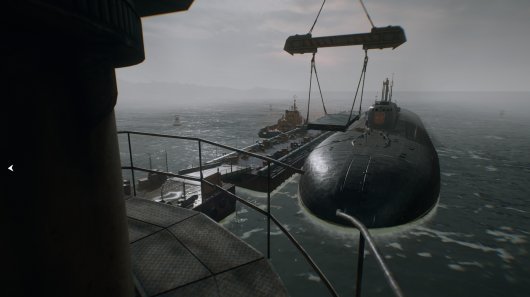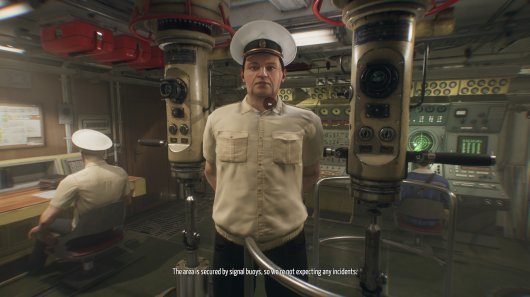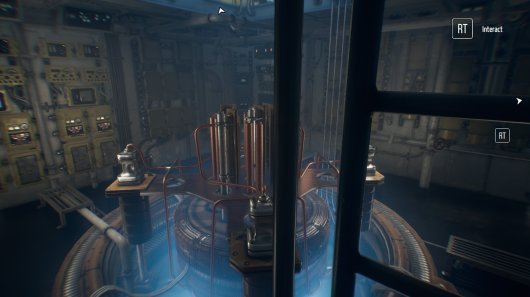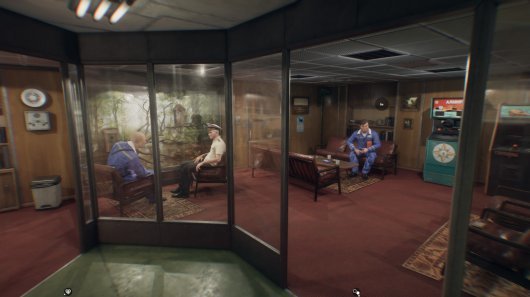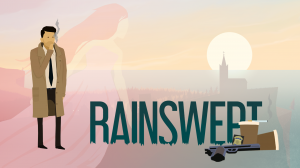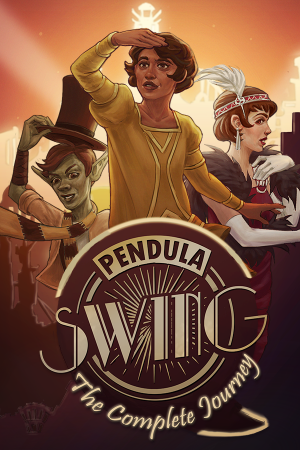Review for KURSK
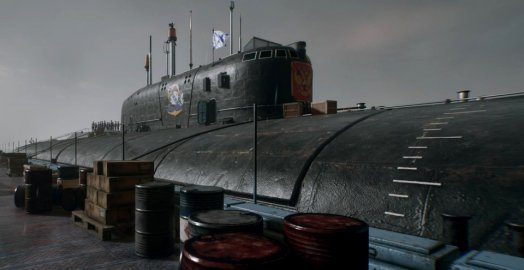
KURSK is described by its developers, Jujubee, as the first-ever adventure-documentary. It is based on the real life sinking of the K-141 Kursk nuclear submarine, which sank during war exercises in the Barents Sea on August 12, 2000. Unfortunately, outside of providing an interesting virtual tour of the ill-fated boat, the game fails to be either a compelling adventure experience or an insightful examination of the disaster, as the storytelling is terrible, the characters forgettable and the gameplay is slow, clunky and completely pointless.
Players take on the role of an unnamed American spy who is sent aboard the Kursk on what seems to be a standard reconnaissance mission (despite there being no historical proof of this ever happening). Those who are familiar with the plight of the submarine already know how the story ends, but even for anyone who isn’t, the game’s opening sequence dispels any suspense, laying out the tragic tale of the pride of post-Soviet Russia.
As the game begins, our protagonist sits quietly in his quarters on the sub as the player takes control using the standard free-roaming, first-person keyboard/mouse combination. The attention to detail really stands out right from the start, with a load of period-specific items to play with as you get used to the mechanics, including an old handheld video. Then suddenly an explosion knocks you to the ground. With red warning lights going off, sirens blaring and smoke filling the room, you naturally begin to panic, desperately clicking on anything to pick yourself up. In this first basic puzzle, you simply need to find a way out of the room, but as you attempt to jimmy the door open, the scene stops.
Flash back sometime earlier, and you find yourself waking up in a five-star hotel to the sound of running water, as a local… ummm, companion is showering. Again the game displays an amazing attention to detail in capturing the location and time period. As you walk around the luxurious suite, complete with typical Russian décor, you can interact with a number of things around you, although none of them are of any importance. You can also watch a little news on TV. Your briefing from HQ can be accessed from the bulky laptop running a pretty good rendition of Windows 2000. It is here that you are introduced to your trusty PDA and its attachments, which are pivotal tools used throughout the game to pick locks, review mission objectives, take photographs, and basically whatever is needed.
The opening credits that follow are cleverly placed throughout the next sequence, as you ride in a Russian military truck through the scenic countryside to rendezvous at the Oscar-class submarine. All the characters in the game speak Russian, with subtitles in English and other languages, which further adds a welcome sense of immersion. Upon arriving at the Barents Sea port, the visual feast continues when the captain takes you on a private tour of what is presumably an authentic reproduction of the sub, including the combat room and reactors, as well as the infamous torpedo hold.
Once the tour has concluded, you are free to move around. Since you are impersonating a high ranking Russian officer, you basically have access to anywhere on the ship, but manoeuvring your way through it is tedious. I understand the realism factor of making the submarine cumbersome to navigate, but KURSK insists on showing animations of the watertight hatches being opened. Taking around ten seconds to sit though each time, you might have to wait for five or six of these just to go from one end of the boat to the other. It’s not a major complaint, but a skip feature (or just automatically skipping them after the first few times) would have been greatly appreciated to speed things along.
The immersive atmosphere from the start of the game disappears in the company of your fellow crewmates – or rather, the lack of them. The ship is largely deserted, in contrast to the 118 men that the actual Kursk carried on its fateful voyage. The vessel doesn’t seem like it’s engaging in training exercises, it just feels like it’s out for a Sunday cruise. When you do see other people, the characters don’t appear to be from the same developer, as the models are primitive and their movements robotic. Not only don’t they physically move around the ship, in most cases they don’t even turn from their desks to talk to you.
The dialog is also thin, with few options for you to select from when engaged in conversation. Even then, no matter what you choose, whether asking an intrusive question or aggressively replying to a commanding officer, there seems to be little difference in the outcome. Most of the crew act like your mates down at the pub, including the officers. There is none of that famous Russian military discipline, and these interactions with your fellow shipmates end up detracting from the game’s believability.
This also means it’s easy to forget your main task of being a spy. There doesn’t appear to be anything you can say or do that will arouse suspicion, and there is no real moment in the game where any element of espionage is exciting or thrilling. Your only real recon involves tasks as easy as snapping off a few photos, but sometimes the game does not even explain what information was in a document, just crosses it off your objectives list in the PDA.
As lovely and painstakingly accurate as the layout may be, the gameplay is truly irritating. At best it’s clunky and at worst it’s downright glitchy; some of the missions in the original release did not even function correctly, which was very annoying, although several updates have since addressed at least some of the technical issues. Still, the tasks themselves are unimaginative and involve a lot of backtracking looking for items that aren’t even really needed for anything apart from moving the story along.
The main missions require no real puzzle-solving ability, just basic interaction like clicking on a document or opening a box. Even hacking into a computer is done simply by downloading the info onto the PDA, then walking away, never to review it. Many of the goals involve taking part in minigames to distract your comrades so that you can steal their keys or access their cabins. And yet engaging in a Russian “man of steel” contest to gain respect, or being challenged to a hefty workout session on the treadmill against another shipmate (a simple case of button smashing), just make the game more tedious than fun.
The story, as it turns out, is rather linear, and all the tasks and missions are there seemingly just to fill time until you eventually loop round to where the game started, right before the first explosion. As you might expect, the game does pick up after this, as fear sets in and a great job is done of creating an appropriate sense of chaos and confusion: the companionways light up red, with flames shooting out of pipes and smoke filling the air, the vessel completely transformed.
Strangely, as with most of the game, there is no music to set the ambiance here – although occasionally some seemed to pop in unexpectedly and then fade away. Nor does there appear to be any time limit for this final part, which requires you to perform some frustrating platforming elements. Failing here just means repeating the same sections over and over until you time your actions correctly as you make your way through the wreckage. You cannot die here, so don’t worry; you can take as long as you want. It’s a shame this is handled so clumsily, because once again the urgency and panic from the initial explosion is removed, and now it’s just a matter of navigating the ship a final time and triggering events in the story.
Eventually you’ll reach a point where you can choose whether to stay in the un-flooded compartments with the crew – which, given your foreknowledge of the ship’s ultimate fate, seems utterly ridiculous – or make a break for it by searching for a diving suit and attempting to swim to the surface – equally ridiculous for a “documentary” since no-one was ever known to have escaped.
Even after all that, the game's ending is by far the most disappointing aspect, as it is no more than a little bit of text on-screen about the sinking of the Kursk, with no follow-up to the story of the protagonist or anyone else. The information you acquired isn’t used for anything, which just leaves you feeling like you wasted your time.
Ultimately, the captivating premise and stunning environment are wasted by tedious navigation, boring and pointless gameplay, and immersion-killing characters. After the novelty of an impressive first 20 minutes had worn off, KURSK became difficult to care about, even to the point where if I weren’t reviewing the game, I probably would have stopped after the first hour instead of the full 5 or 6 it took to complete. Beyond the setting, everything seems like an afterthought, as it lacks the atmosphere of time and place, and fails to capture the severity of the situation like the recent movie of the same name successfully managed.
As an avid industrial and wartime history buff, I am probably the prime target audience for KURSK, so I dearly wanted the game to be good. There is nothing I would appreciate more than an accurate, interactive recreation of such a mysterious event as depicted through the filter of an intriguing spy story. Sadly, even the meticulous attention to detail and beautiful rendition of one of naval history’s most infamous submarines aren’t nearly enough to stop this title from sinking.
WHERE CAN I DOWNLOAD KURSK
KURSK is available at:
We get a small commission from any game you buy through these links (except Steam).Our Verdict:
Beyond KURSK‘s virtual tour of the ill-fated titular submarine, this self-proclaimed “adventure documentary” works as neither a compelling adventure game nor a fact-based documentary of the mysterious disaster.





